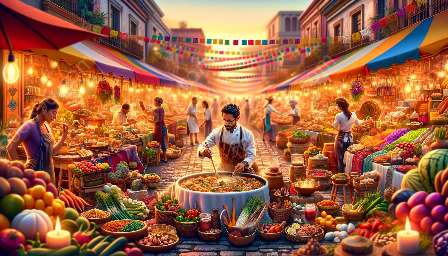When it comes to Bolivian cuisine, one cannot ignore its deep connection to indigenous origins, which has shaped the culinary landscape of this South American nation. Bolivian food is a delightful fusion of traditional indigenous ingredients and cooking techniques influenced by Spanish and other European settlers over time. This unique blend has given rise to a diverse and flavorful gastronomic tradition that reflects the country's rich history and cultural diversity.
Understanding Indigenous Roots
The indigenous heritage of Bolivia is deeply intertwined with its cuisine. The country's varied geography and climate have influenced the availability of ingredients, which have been utilized by different indigenous groups for centuries. From the highland Quinoa to the Amazonian fruits and fish, each region contributes distinct flavors and cooking styles to the overall tapestry of Bolivian food.
Influences from Latin American Cuisine History
Bolivian cuisine is part of the larger Latin American culinary tradition, which has its own unique history and influences. Throughout the centuries, Latin American cuisine has been shaped by a rich tapestry of indigenous, European, African, and Asian influences. As a result, Bolivian cuisine has not only been influenced by the indigenous heritage of the region but also by the broader Latin American culinary history.
The Fusion of Flavors and Ingredients
When exploring Bolivian cuisine, one will encounter a wide array of unique ingredients and flavors that reflect its indigenous origins. The staple grain quinoa, for example, has been a dietary mainstay for indigenous Andean cultures for thousands of years. Other indigenous ingredients such as potatoes, corn, and various tubers form the base of many traditional Bolivian dishes, showcasing the deep-rooted connections to the land and its bounty.
Regional Variations and Culinary Traditions
Bolivia's diverse geography and cultural heritage have given rise to a wide range of regional culinary traditions, each with its own unique flavors and specialties. For example, dishes from the Altiplano region, such as the hearty and flavorsome Puchero, reflect the influence of indigenous cooking methods and European ingredients.
Preservation of Indigenous Cooking Techniques
Despite the influences from European settlers, many indigenous cooking techniques have been preserved and continue to be an integral part of Bolivian cuisine. Traditional methods such as the use of clay pots, open flames, and natural herbs and spices are still prevalent in many households and restaurants, showcasing a deep respect for the indigenous culinary traditions.
The Future of Bolivian Cuisine
As Bolivian cuisine continues to evolve, there is a growing awareness and appreciation for the indigenous origins of its culinary heritage. Efforts to preserve traditional recipes, ingredients, and cooking methods are gaining momentum, ensuring that the rich tapestry of Bolivian cuisine remains a vibrant and integral part of the country's cultural identity.

